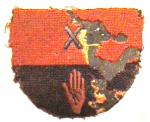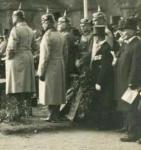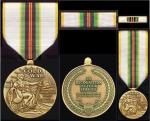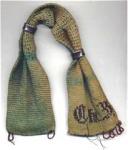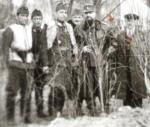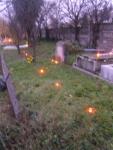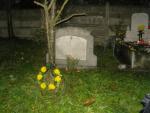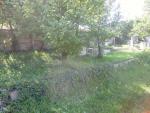-
Posts
9,099 -
Joined
-
Last visited
-
Days Won
4
Content Type
Profiles
Forums
Blogs
Gallery
Events
Store
Everything posted by Kev in Deva
-

WW1 Pendant
Kev in Deva replied to dante's topic in Germany: Imperial: Uniforms, Headwear, Insignia & Personal Equipment
Hallo Paul, Christmas whats that??? One of the nice, kind, Moderators can change the title if you P.M. one. With regards the colours of the pennant, they feature in the State of Baden 0n some of their medal ribbons. Kevin in Deva. -

WW1 Pendant
Kev in Deva replied to dante's topic in Germany: Imperial: Uniforms, Headwear, Insignia & Personal Equipment
Hallo dante, if I may be so bold, and no offense intended a small correction of your English, the word you are searching for is pennant or small flag, a pendant is worn around the neck on a chain. Or are you looking to identify one of the items placed on the pendant, if so could you post close ups of the objects as well please. Kevin in Deva -

double headed eagle medal
Kev in Deva replied to burnie's topic in Central & Eastern European States
Hallo burnie nice looking Item, but I have as yet, no idea which country its from, however from the size it might be off a sash and not a breast decoration. I took the liberty of brightening up your pictures for clarity. Two-headed eagles feature in: Albania, Austria, Imperial Russia, Serbia, to name but a few. Kevin in Deva. -
Hallo Gents, my brother forwarded the following picture, which he spotted while surfing the web, all he remembers is its off an American Web Site: It shows Irish Army Defence Force Members of I.S.A.F. deployed in Afghanistan in their unigue Desert camouflage. Why somebody photo-shopped the original names in the picture caption is beyond me as its obviously been released for Publication. Left to right ranks: 1. Commandant, 2. Company Sergeant, 3. Commandant, 4. Lt.Colonel, 5. Company Sergeant, (para qualified), 6. Cavalry Commandant (Glengarry on head), 7. Company-Sergeant. Points to note: Officers have a blackened Bronze Capbadge on Black Beret - Glengarry. Other ranks have "Staybright" plastic cap badges (which I hope the subdued with paint or boot polish quick!!!). Name tapes appear to have a mini Irish Tricolor then the name then the I.S.A.F motif in Green and White. Kevin in Deva. PART TWO: Defence Forces News = E.U. Battle-groups, 18 October 2007 The Nordic Battle-group Shoulder Flash On 18 Oct 07, 71 troops will fly to Sweden and join up with 15 advance troops that are in Sweden. They are deployed as part of the Nordic Battle-group (NBG) Exercise Nordic Resolution in which the full battle-group (2,600 troops) will be on exercise in Sweden. The bulk of troops (2,300) come from Sweden with the remainder from Norway, Finland, Estonia and Ireland. In Sweden until 15 Nov 07, the NBG troops will receive their equipment which has been shipped by sea to Gothenburg. The equipment contains 9 armoured personnel carriers, 11 other vehicles, weapons, pyrotechnics and equipment contained in a total of 230 tonnes of stores. During the time the troops will be accommodated in SKOVDE (300 km from Stockholm) initially where they will marry up with other nation?s troops in the battle-group. They will carry out initial interoperability training from 19 Oct ? 01 Nov 07. This will get all troops familiar with each others operating procedures and clarify command and control procedures. The main exercise (Ex Northern Resolution) takes place from 03 ? 12 November 2007 over 1,000 km NORTH of SKOVDE and inside the Arctic Circle in the area of BODEN. The temperatures can get down to as low as -28 degrees C and daylight at this time is between 0830 ? 1530 hours. The strategic movement and deployment of the 2,600 troops (mainly by rail) is part of the exercise as any Battle-group deployment will necessitate a strategic move. The troops will also be exercised in strategic, operational and tactical communication and establishing initial operational capability and the securing of the exercise area in and around the town of BODEN and working through a peace support operation scenario from a peacekeeping perspective. On return to Ireland in November the troops will undergo final preparations for standby for any potential battle-group deployment from 01 January ? 30 June 2008. During that time the troops in Ireland (based in Custume Barracks, Athlone) will be on 5 days notice to move with all stores and equipment to include food, water, ammunition to sustain the troops for 30 days. Ireland has provided a stand alone Improvised Explosive Device Disposal and Engineer Specialist Search unit as part of the battle-group, of 86 troops, under command of Commandant John Whittaker. This team offers the battle-group commander the ability to systematically detect, isolate, clear and dispose of conventional military munitions, land mines and improvised devices (home made/?booby traps?) which may be in any potential area of operations. We also have 5 troops in the Operational H.Q. that will be based in Northwood, U.K. for the exercise and throughout any potential deployment, and a further 14 troops in the force HQ, that will deploy in Sweden and to any potential troubleshot if the battle-group is deployed. Our troops have been in preparation for this exercise beginning with our own collective training in May of this year culminating in Full Operational Capability testing last July in Kilworth Camp in Cork. The term battle-group is a generic military term denoting the size of a force that is capable of standalone operations. Thus, the word ?battle-group? does not refer to any proposed mission of this international military grouping but to its size and structure.End of Article. PART 3: Irish Defence Forces News: Lebanon Stand-down, 26 October 2007. The relationship between the Defence Forces and Lebanon reaches another milestone tomorrow when the last Irish unit is stood-down at a ceremony at Camp Ida tomorrow, 27 October 2007. Defence Forces troops returned to the UN Interim Force in Lebanon (UNIFIL) in October 2006 following the re-emergence of conflict in southern Lebanon. Troops were deployed with Finnish troops in a joint Finnish-Irish Engineer Battalion, in which the Irish troops were conducting reconnaissance, security and protection duties as the Finnish element went about de-mining and reconstruction work. The unit was deployed by Government decision for 12 months. The 160 strong Irish contingent of the 36 Infantry Group U.N.I.F.I.L., under the command of Lieutenant Colonel Michael McCarthy, is drawn mainly from the 2nd Eastern Brigade, with the bulk of troops from Dublin and Dundalk. Following the stand-down parade the unit will commence preparations for return to Ireland of their equipment and themselves which will be completed by late November 2007. Note: The Defence Forces previously served with U.N.I.F.I.L. from 1978 ? 2001 serving over 32,000 individual tours of duty in which 46 members of the force gave their lives in the service of peace. There are currently 565 members of the Defence Forces serving overseas. Photograph courtesy of Sarah Hunter. Kevin in Deva
-
Hallo Gents, nearly forgot about this one, it was taken on my visit to Kempten, in the Allg?u region of Bavaria, back in September. It shows a member of the Bundswehr (left) with 3 members of the AZERBAIJAN Military, they were visiting the town so I snapped a quick picture before anybody objected. I did not get the chance to speak to them or make closer pictures of their insignia The local German Unit is the Geb Sanit Bn 8, a medical unit so they could be on an exchange Medical Course. Kevin in Deva
-
Hallo Ulsterman, that would be savagely thrashed by the Kaiser' troops, Franz-Josephs' troops & Bulgarian troops. Much of the equipment captured was of a very low quality, with the exception of Artillery pieces, the Romanian Air-Force was of poor quality, and Infantry equipment very dated. Kevin in Deva.
-
Photo by Vic Damon (3rd Armored Division Cold War Veteran). BACKGROUND INFORMATION ON THE COLD WAR MEDAL. Congress did not specifically authorize a medal for Federal service during the cold war, but limited its official recognition to the Cold War Recognition Certificate. This medal is intended for use by State Guard organizations, military and patriotic societies, and by private citizens who served during the Cold War. It has been adopted as an official medal of the Military Order of Foreign Wars. It offers a unique form of recognition specifically for citizen-soldiers and Federal civilian employees who served during the cold war. Interest in this medal has been strong, and many former service members have obtained it to place in a shadow box with their Federal and State military awards. Period of Service. The medal recognizes honorable service between the inclusive dates of September 2, 1945 and December 26, 1991. Designer. The Cold War Medal was designed by Nadine Russell, the Chief of Creative Heraldry at the Army's Institute of Heraldry and the designer of many campaign and service medals, including the Southwest Asia Service Medal, the Armed Forces Service Medal, and the Outstanding Military Volunteer Service Medal. Symbolism. Obverse: The allegorical figure of Freedom sits upon a vantage point over-looking a landscape suggestive of the Fulda Gap, the anticipated point of attack by Communist forces in Europe during the Cold War. The Fulda Gap thus represents all territory subject to the threat of invasion or war. The sitting figure also alludes to a long-term and watchful military presence. She holds a sheathed Roman sword in her hand, point down. The sword represents military strength, and its being sheathed is symbolic of defensive military action. Her foot rests on a book, representing both history and law. To her right is an American bald eagle grasping a bundle of arrows and an olive branch. The eagle, symbolic of the United States, represents the principles of freedom. The arrows stand for the willingness to use force in support of freedom, and the olive branch alludes to the goal of peace. Behind the figure of Freedom, and on the horizon of the landscape in front of her, a sun rising in the east symbolizes the birth of a new era of peace and stability arising from the end of the Cold War. Superimposed over the geographic scene, and below the rising sun, is the inscription, Promoting Peace and Stability, which is taken from the wording on the Congressional certificate and which identifies the efforts recognized by the medal. Reverse: In the center of the medal, the inscription, IN RECOGNITION OF YOUR SERVICE, is enclosed within a stylized wreath of laurel, which represents honor. The wreath is tied at its base by a ribbon, the ends of which rise above a shield taken from the coat of arms of the United States. The dates 2 September 1945 - 26 December 1991, which are taken from the Congressional certificate, appear beneath the inscription. Ribbon: In the center of the ribbon there is a narrow stripe of red, repre-senting courage and the willingness to sacrifice life for freedom. This red stripe is bordered by a narrow stripe of gold, which alludes to honor and achievement. The gold is bordered by black, which stands for the threat of war, and the black is bordered by green, which represents growth, hope, and life. The green is edged in gold, which is bordered by white, the predominant color of the ribbon and which represents integrity and purity of purpose. The ribbon is edged in gold. Criteria: This medal may be worn by any individual for service in a component of the Armed Forces (including National Guard, State Guard, and Reserve Forces) and by civilian employees of the Government who contributed to the historic victory in the Cold War for any period between the inclusive dates of September 2, 1945 and December 26, 1991. Background: The Yalta conference was a wartime planning session among the Allies held on February 4-11, 1945. Its purpose was to re-establish the nations that had been conquered by Germany and to reach an agreement on the occupation of Germany following the war. The United States and Great Britain made significant postwar territorial concessions to the Soviet Union, little realizing that after the War the Soviet Union would seek to extend its influence and control through-out Eastern Europe. However, following the war cooperation with our former ally collapsed as the Soviet Union extended its power and influence over Albania, Bulgaria, Estonia, Hungary, Latvia, Lithuania, Outer Mongolia, parts of Manchuria and North Korea, Romania, and Yugoslavia. They also annexed the Kurile Islands and the southern half of Sakhalin Island and fomented trouble in Iran, Turkey, and Greece. Not only did the Soviets dominate Eastern Europe, it became clear that they had designs on Western Europe as well. On March 5, 1946, Winston Churchill delivered his famous speech at Westminster College in Fulton, Missouri, where he said, "It is my duty to place before you certain facts about the present position in Europe. From Stettin in the Baltic to Trieste in the Adriatic, an iron curtain has descended across the Continent. Behind that line lie all the capitals of the ancient states of Central and Eastern Europe." He went on to note that "Twice the United States has had to send several millions of its young men across the Atlantic to find the war; but now war can find any nation, wherever it may dwell between dusk and dawn." On June 24, 1948 the Soviets imposed a blockade on Berlin. In order to avoid having to confront them directly, the United States initiated a massive airlift to provide the necessities of life to the 2.5 million residents of the city. In April of 1949 the North Atlantic Treaty Organization (NATO) was established, and on May 12, 1949, the blockade ended. However, there was little time for celebration: in September of 1949 the United States learned that the Soviets had the atomic bomb, and the cold war escalated dramatically in its intensity. The Soviet efforts were countered by the so-called "Truman Doctrine." President Truman took the position that, "It must be the policy of the United States to support free peoples who are resisting attempted subjugation by armed minorities or by outside pressures." This policy ushered in an era of American efforts to halt Russian expansion. George F. Kennan, a diplomat and scholar, advocated a policy of "long-term, patient but firm and vigilant containment" based on the application of counterforce to the Soviet's expansionist efforts. This "containment policy" called for United States support in resisting Communist aggression throughout the world. During the Cold War 325 Americans died as a result of hostile action; More than 200 airmen were killed by Communist air defenses, and more than 40 American intelligence aircraft were shot down, killing 64 Cryptologists and 40 crew members. Countless other Americans had their lives disrupted through military service in support of the Cold War. The Cold War was punctuated by such crises as the Berlin Airlift, the Cuban Missile Crisis and the Berlin Wall, each of which brought the world to the brink of disaster. The tide turned on November 9, 1989, when it became officially legal for people to come and go as they pleased into West Berlin; the next day they began to tear the wall down. Finally, on Christmas day in 1991, the Soviet Union collapsed and the cold war ended. Through the dedication and persistence of an entire generation of Americans and their allies, a catastrophic nuclear war with the Soviet Union was averted, and principles of democracy ultimately began to take root in Eastern Europe. The Cold War medal celebrates this epoch, which will ultimately be regarded as one of the great events of the Twentieth Century. HOW TO OBTAIN YOUR COLD WAR RECOGNITION CERTIFICATE The Cold War medal was inspired by the Cold War Recognition Certificate created by Section 1084 of Public Law 105-85, approved on November 18, 1987 (The "National Defense Authorization Act for Fiscal year 1998"). This certificate recognizes "members of the Armed Forces and civilian personnel of the Government who served the United States during the Cold War." How to Apply for the Cold War Recognition Certificate. All eligible personnel must apply for the certificate on their own behalf. The Department of the Army is the Executive Agent for processing all applications. To access their web site click here, or to contact them by e-mail click here. You can also FAX them at 1-800-723-9262. Finally, you can send your request by regular mail to: CDR, US Army Human Resources Command Cold War Recognition, Hoffman II ATTN: HRC-CWRS, 3N45 200 Stovall Street Alexandria, Virginia 22332-0473 If you are no longer on active duty, your best bet is to obtain application procedures directly from the Army and then FAX them a copy of your DD-214 (Certificate of Release/Discharge from Active Duty). Please bear in mind that demand for the certificates has been extremely heavy, and it now takes a year for your application to be processed. https://www.hrc.army.mil/site/active/tagd/c...war/default.htm Kevin in Deva.
-
Hallo JimZ thanks for your reply, with regards this item, as I stated in "post 1", a friend of mine asked for help to identify it, I never said I was buying it. I also know its not "official" issue, I was just trying to help identify it to a specific time and place. Although the Item looks green to him, to my eyes it is blue with white tinge, seeing the item was located in Bavaria, I though of the State Colors, but that might just be the effects of the scanner. The initials being in the Gothic Script possibly indicate a German connection, but thats just conjecture on my part. Kevin in Deva.
-
Hallo Gents I tried the combination 1870 Sroberz in a web search and got the following hit: http://www.denkmalprojekt.org/dkm_deutschl...de_groebers.htm and: Regiment den Feldzug 1870/71 mit, beendete seine Studien darauf in Marburg, ... ??ber die franz?sische Sprache? (in Gr?bers ?Grundri? der romanischen . . . at: http://www.peter-hug.ch/lexikon/Suchier Kevin in Deva.




